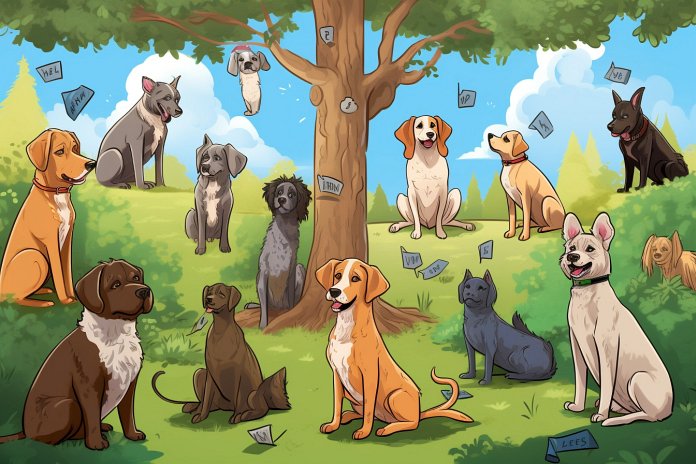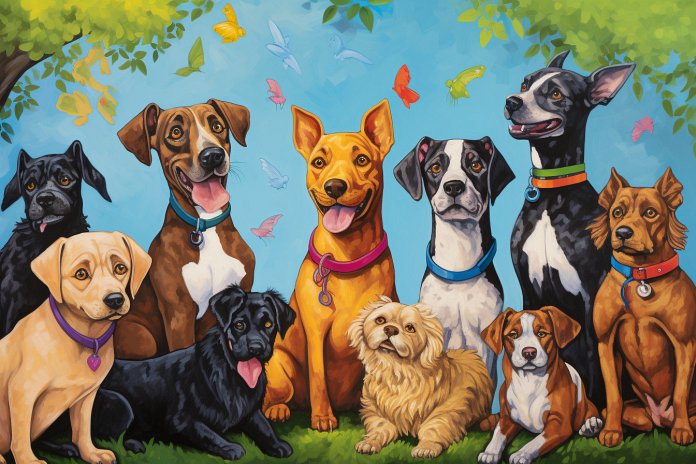
Confusion can cause anxiety and frustration for both humans and dogs. There are various reasons why confusion can occur, such as unclear communication, sensory impairments, and cognitive dysfunction. Understanding the signs of confusion in dogs and knowing how to support them is essential.
Signs of Confusion in Dogs
Dogs may tilt their heads when they are confused, which is an adorable behavior. Other signs of confusion in dogs can be seen through their body language, such as anxiety, hyperactivity, repetitive behaviors, and lack of responsiveness. Licking their lips and scanning their environment are also signs of confusion.
Confusion in Training
During training, dogs may exhibit signs of confusion if the trainer’s signals are unclear. They may become hyperactive, ignore commands, and reject treats. As confusion intensifies, dogs may bark, startle easily, or give up and go lay down.
Canine Cognitive Dysfunction (CCD)
Senior dogs can experience confusion as a result of CCD, which is a cognitive decline condition. Signs of confusion in senior dogs include separation anxiety, repetitive movements, forgetting toilet training, disinterest in interaction, and shaking.
Body Language
Signs of confusion in dogs can be observed through barking, head tilting, panting, lip licking, head turning, and ears being held back. Senior dogs may also display unusual behavior, forget learned commands, act agitated or withdrawn, and show disinterest in play or attention.
The History and Science of Confused Dogs
Dogs have been living with humans for centuries and have the ability to understand language and experience emotions similar to toddler-aged children. They learn commands and signals through training. The head tilt behavior is often associated with confusion, although the exact reason for this behavior is still unknown.
Helping Your Confused Dog
When training your dog, it is important to provide clear directions and prevent them from making too many mistakes, as this can lead to confusion. Taking breaks, using treats, keeping sessions short, and being patient and positive are all effective strategies.
Conclusion
Understanding the signs of confusion in dogs and knowing how to support them can help alleviate their distress. Whether it’s through clear communication in training or addressing cognitive decline in senior dogs, providing the appropriate support is crucial for their well-being.
“Confusion in dogs is not just about looking cute with a tilted head, it’s a cry for help, an attempt to resolve something that has them stumped. It’s our responsibility to understand and help them navigate through their confusion.”

Tips & Things to Know
1️⃣ Oneto help your dog if they are showing signs of confusion, especially during training, is to stop what you’re doing and allow the dog to relax. Drop a few treats on the ground and remain calm. Once the dog seems relaxed, you can try the command again.
2️⃣ It’s important to keep training sessions short and take plenty of breaks. If the dog isn’t successful after a couple of attempts, the command may be too difficult and should be broken down into simpler steps.
3️⃣ If you have a senior dog showing signs of Canine Cognitive Dysfunction, it’s important to work with your veterinarian to find strategies that may help your pet. There are new studies on vitamins and laboratory-tested products that may be beneficial. It’s also crucial to educate yourself and your family on how to react to your dog’s behaviors and offer appropriate support.
Frequently Asked Questions, Answered ✅
1. How can confusion affect dogs during training?
– Confusion can make dogs anxious and lead to behaviors such as hyperactivity, repetitive behaviors, and lack of responsiveness.
2. What are some signs that a dog is feeling confused?
– Signs of confusion in dogs include head tilting, lip licking, scanning the environment, panting, and ears back.
3. What are some signs of confusion in senior dogs?
– Signs of confusion in senior dogs may include separation anxiety, forgetfulness, disinterest in play or attention, acting withdrawn, and difficulty with toilet training.
4. How do dogs communicate their confusion?
– Dogs communicate confusion through their body language, such as barking, head tilting, panting, lip licking, head turning, and ears back.
5. Is the head tilt in dogs a sign of confusion?
– The head tilt in dogs is believed to be a sign of confusion, although the exact reason for this behavior is not fully understood.